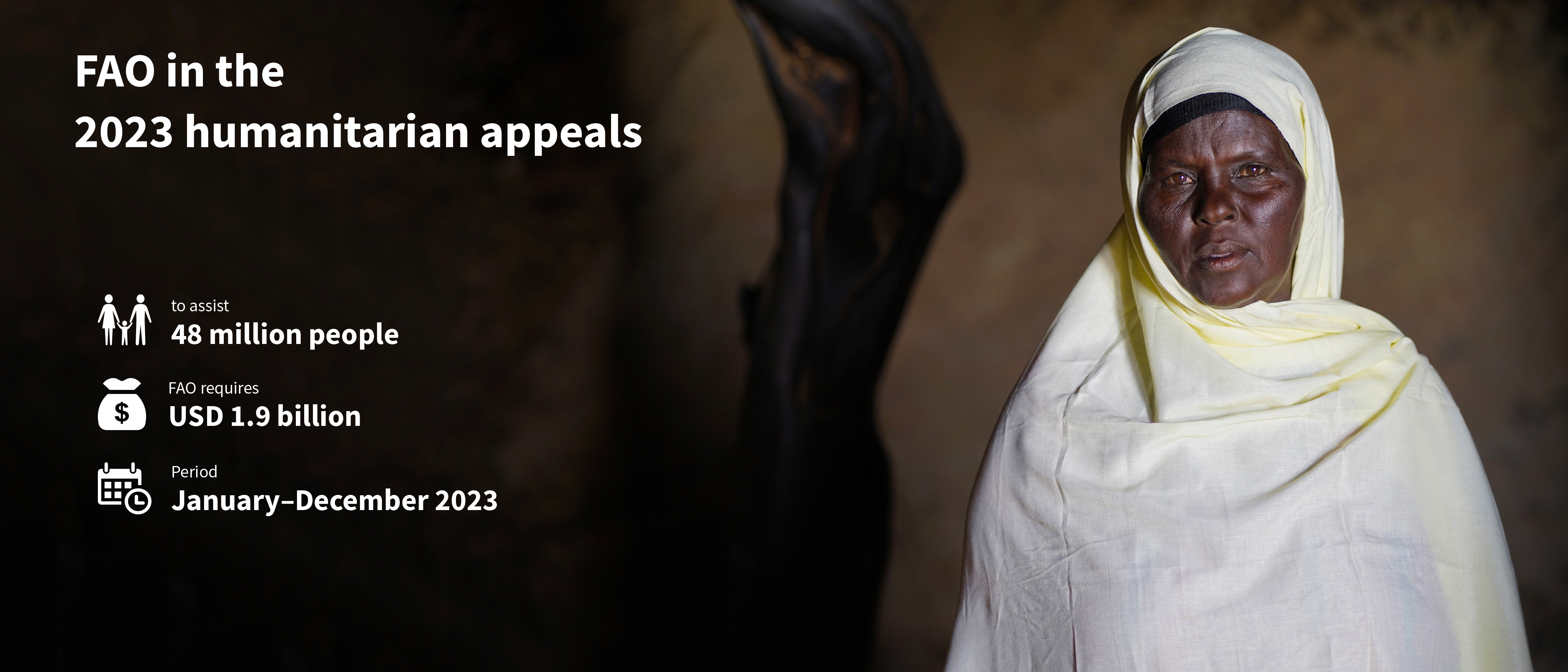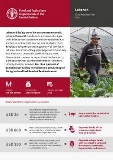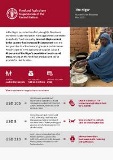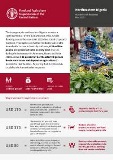
Across the world, 222 million people are experiencing high acute food insecurity, almost one in five of whom are struggling to access enough food to survive the day. They are overwhelmingly farmers, fishers, herders and foresters, whose most basic means of survival have been devastated by conflict or extreme weather (drought, floods), pests, disease or the steady disruption of economic turbulence and instability.
Agriculture aid is life-saving humanitarian aid. Urgent, time-sensitive agricultural interventions, especially when combined with cash and food assistance, have enormous impacts on food availability, nutrition and displacement, among others, significantly cutting other humanitarian costs. More importantly, such interventions are geared towards meeting the needs and priorities of affected communities – allowing them to remain in their homes where it is safe to do so, meet their own needs and lead their own future recovery.
Under the 2023 humanitarian appeals, FAO requires USD 1.9 billion to help almost 50 million people gain access to a steady supply of nutritious food, facilitate their recovery and lay the foundations for resilience to future shocks.
In depth

Lebanon: Crisis Response Plan 2023
05/2023
Lebanon is facing one of the most severe economic crises in the world in addition to a protracted refugee crisis. Inflation has skyrocketed and unemployment has reached an all-time high.
.tmb-th600x450.jpg?Culture=fr&sfvrsn=4af57e01_1)
Mali: Humanitarian Response Plan 2023
04/2023
Mali faces a severe humanitarian crisis driven by years of armed conflict, climatic hazards and high staple food prices.

Mozambique: Humanitarian Response Plan 2023
03/2023
This document provides an overview of FAO's component of the 2023 Humanitarian Response Plan for Mozambique.

Niger: Humanitarian Response Plan 2023
03/2023
In the Niger, persistent conflict, droughts, floods and increased staple food prices have aggravated vulnerable households’ food insecurity.

Northeastern Nigeria: Humanitarian Response Plan 2023
04/2023
The insurgency in northeastern Nigeria remains a significant driver of the humanitarian crisis. Severe flooding across the country in 2022 devastated crops and livestock.

